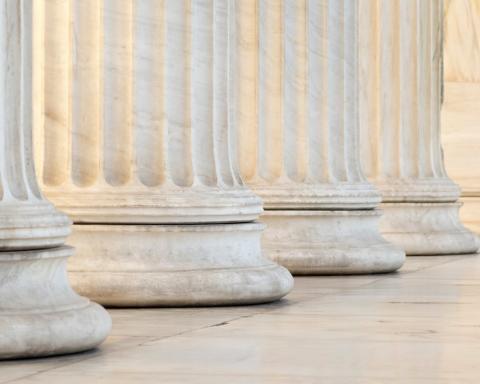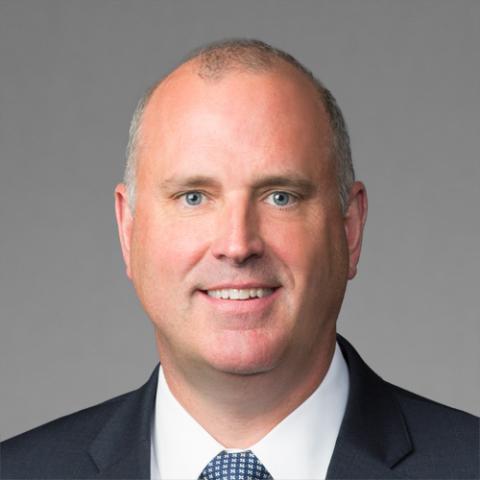Compelling An Officer, Director, or Employee of a Party To Appear at Trial: Exploring the Limits of a Notice To Produce Under Supreme Court Rule 237(b).
The Illinois Appellate Court, Fourth District, recently clarified the scope of a party’s obligations to produce witnesses at trial under Illinois Supreme Court Rule 237(b). In White v. Garlock Sealing Technologies, LLC, No. 04-09-0036, 2010 WL 528384 (4th Dist. Feb. 8, 2010), the Appellate Court determined that although Rule 237(b) requires a party to produce at trial officers, directors, and employees of the party, it does not require that a party produce individuals who are said to be “under a party’s control.” This ruling is significant because it potentially alters the burden of production of witnesses at trial from one party to another.
The White case has a complicated procedural history including the imposition of various sanctions, post-trial motions, two jury trials, and two trips to the appellate court. In light of this history, this article reviews only the basic facts and the ultimate holding in the case. In August 2002, White filed a wrongful-death suit against Garlock Sealing Technologies, LLC (Garlock) and several other defendants. White alleged that Garlock was responsible for her husband’s death because, while employed by Garlock, her husband’s duties required him to perform work that exposed him to asbestos-containing products that eventually led to his premature death. In December 2005, a jury returned a verdict in favor of Garlock. White filed a post-trial motion requesting a new trial based on Garlock’s violations of S.Ct. Rule 213(i) for failure to supplement its disclosures and Rule 237(b) for failure to produce a witness named Dr. Carlson at the jury trial. The trial court granted the post-trial motion and, pursuant to S.Ct. Rule 306(a)(1), Garlock appealed. The Appellate Court affirmed the trial court’s ruling on the post-trial motion and remanded the case for a second trial. White v. Garlock Sealing Technologies, LLC, 373 Ill.App.3d 309, 869 N.E.2d 244, 311 Ill.Dec. 570 (4th Dist. 2007).
On remand, White filed a second Rule 237(b) notice, in which she again requested that Garlock produce Dr. Carlson, this time at the second trial. Garlock filed a motion to quash the request asserting that Dr. Carlson was not, and had never been one of its employees, officers, or directors. Unfortunately for Garlock, Dr. Carlson’s relationship with Garlock was not so simple. The controversy over Dr. Carlson began with inartful responses to discovery requests. Early in the case, White propounded an interrogatory that stated as follows:
Has [Garlock] ever had one or more persons whose primary responsibility included looking after or monitoring the health of [Garlock’s] employees, such as a medical director? If so, state the following as to each person who [ha]s held this position: name, address, name of the position or title, and the dates during which he or she held the position. 2010 WL 528384 at *11.
Garlock’s response to the interrogatory merely stated that Dr. Carlson has done so since July/August 2002. The address listed under Dr. Carlson’s name was Garlock’s business address. As it turns out, Dr. Carlson was never employed by Garlock, rather he was the medical director for Healthworks, which was part of the New York-based Thompson Medical Center. Healthworks had provided medical services on a contract basis to Garlock beginning in 2002. Thus, although Dr. Carlson had visited Garlock plants and treated Garlock employees, he did so in his capacity as an employee of Healthworks and as an independent contractor for Garlock, not as an employee of Garlock. However, Garlock failed to amend its discovery responses to clarify its relationship with Dr. Carlson.
The trial court denied the Garlock’s motion to quash the second Rule 237(b) request holding that the issue relating to Dr. Carlson had been dealt with during the first trial and it ordered Garlock to produce Dr. Carlson at trial. On October 8, 2008 the second jury trial commenced and White called Dr. Carlson as her first witness. Dr. Carlson did not appear at the trial to testify. The next day, White filed a motion for sanctions against Garlock for failure to produce Dr. Carlson. Garlock once again advised the trial court that Dr. Carlson was never an employee of Garlock, that it no longer had a business relationship with Dr. Carlson’s actual employer, Healthworks, and that Healthworks had forbidden Dr. Carlson from appearing at the trial. Despite this information, the trial court granted White’s motion and, as a sanction, entered judgment against Garlock on the issue of liability and causation, with the trial to proceed only on the issue of damages. The jury awarded White $500,000 which was later reduced to $466,666.66 pursuant to setoff.
On appeal, Garlock argued that the trial court erred by finding that Garlock had violated Rule 237(b) for failing to produce Dr. Carlson at trial. Rule 237(b) states, in pertinent part, as follows:
The appearance at the trial or evidentiary hearing of a party or a person who at the time of trial or evidentiary hearing is an officer, director or employee of a party may be required by serving the party with a notice designating the person who is required to appear…. Upon a failure to comply with the notice, the court may enter any order that is just, including any sanction or remedy provided for in Rule 219(c).
Garlock argued that the trial court erroneously interpreted Rule 237(b) to include not only persons who at the time of trial are officers, directors or employees of a party, but also persons who were at some point under a party’s control. White, on the other hand, argued that the trial court correctly interpreted the rule because “the spirit” of Rule 237(b) requires a person under a party’s control to be considered the equivalent of an officer, director, or employee. White argued that the terms “officer, director, or employee” represent a type of agency relationship and it is precisely this agency relationship that serves as the basis for a court to include within Rule 237(b)’s fold individuals who are “under a party’s control.”
The appellate court rejected White’s expansive reading of Rule 237(b) and agreed with Garlock’s interpretation. The court stated “[t]he plain language of Rule 237(b) is clear and unambiguous.” 2010 WL 528384 at *8. It noted that the Supreme Court’s intent when it promulgated Rule 237(b) was to give the trial courts the ability to force – through sanction or other remedy – a party to produce a person who was then an officer, director, or employee of that party. The court held that Garlock did not violate Rule 237(b) because Dr. Carlson was not an officer, director, or employee or Garlock at the time of the trial.
The court rejected White’s agency arguments as unsupported because the Supreme Court is “perfectly capable of saying what it means and understands the importance of using precise language.” 2010 WL 528384 at *9. The court noted that Rule 237(b) does not include the term “agent” nor does it use the phrase “a person under a party’s control” but instead advisedly uses the terms “officer, director, or employee.” The court found the descriptive words “officer, director, or employee” to be limited and legal terms of art. The court concluded with the following observation: “if the [S]upreme [C]ourt meant for Rule 237(b) to include circumstances wherein a party has some control over persons who are not technically employees, the [S]upreme [C]ourt would have said so.” Id. The court reversed the trial court’s judgment and remanded the case for a new trial.
Practitioner’s Note: A Rule 237(b) notice to produce a person at a trial or evidentiary hearing is an easy, inexpensive means of compelling appearance in court. However, as this case aptly demonstrates, Rule 237(b) has its limits. First, make sure the person being compelled to appear is actually an officer, director, or employee of the opposing party. Second, the person being compelled to appear must be an officer, director, or employee at the time of the trial or the evidentiary hearing. If, at the time of trial, the individual no longer works for an opposing party, then a Rule 237(b) notice to produce that individual will be insufficient and a subpoena served under Rule 237(a) will be required to compel that individual’s attendance.









